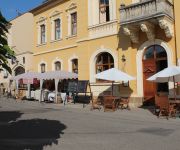Facts and Data
Webpages:
Official Unesco Page
View photos from OUR PLACE the World Heritage collection
Tokaj (Tokaj Hétszoló Association)
Basis Data:
Unesco World heritage since: 2002
Size of heritage: 13,255 ha
- Buffer zone: 74,879 ha
Coordinates:
Longitude: 21,350°
Latitude: 48,150°
Summary
The cultural landscape of Tokaj graphically demonstrates the long tradition of wine production in this region of low hills and river valleys. The intricate pattern of vineyards, farms, villages and small towns, with their historic networks of deep wine cellars, illustrates every facet of the production of the famous Tokaj wines, the quality and management of which have been strictly regulated for nearly three centuries.
Location on Map
Show bigger map on Openstreetmap
Introduction
The Tokaj Wine Region Historic Cultural Landscape, located in the County of Borsod-Abaúj-Zemplén in Hungary, is a UNESCO World Heritage site renowned for its rich history and exceptional viticulture. This cultural landscape has been recognized for its outstanding universal value, representing centuries of winemaking traditions and unique natural features.History
The history of the Tokaj Wine Region dates back to the 12th century when the region's viticulture began to flourish. The area's favorable climate, with its warm summers and long, sunny autumns, combined with the volcanic soil, created the perfect conditions for cultivating grapes. The region's winemaking traditions were further developed during the reign of King Louis the Great in the 14th century when vineyards were expanded and wine production was regulated. In the 17th century, the Tokaj Wine Region gained international recognition for its sweet wines, particularly the famous Tokaji Aszú. These wines were highly sought after by European nobility and were even referred to as the "Wine of Kings, King of Wines." The region's reputation continued to grow, attracting wine connoisseurs from around the world.Current State
Today, the Tokaj Wine Region Historic Cultural Landscape continues to thrive as a center of viticulture and winemaking excellence. The landscape covers an area of approximately 28,800 hectares, encompassing vineyards, villages, and historical landmarks. The region's vineyards are carefully cultivated, following traditional winemaking practices that have been passed down through generations. The unique microclimate, characterized by morning mists and sunny afternoons, contributes to the development of noble rot, a key factor in the production of Tokaji Aszú wines. The vineyards primarily grow Furmint, Hárslevelű, and Sárgamuskotály grape varieties, which are used to create a wide range of high-quality wines. The Tokaj Wine Region is also home to several charming villages, each with its own distinct character. These villages, such as Tokaj, Mád, and Tállya, showcase traditional architecture and provide a glimpse into the region's rich cultural heritage. Visitors can explore the historic cellars, where wines are aged in oak barrels, and learn about the winemaking process from knowledgeable locals. To preserve and promote the unique cultural landscape, various initiatives have been undertaken. The Tokaj Wine Region Cultural and Landscape Preservation Association works to safeguard the region's heritage and organizes events and festivals to celebrate its viticultural traditions. The Tokaj Wine Region Museum in Tokaj provides visitors with a comprehensive understanding of the region's history, winemaking techniques, and the significance of Tokaji wines. In recent years, wine tourism has flourished in the Tokaj Wine Region, attracting visitors from all over the world. Wine enthusiasts can participate in guided tours, wine tastings, and even grape harvesting experiences. The region's wineries and guesthouses offer a warm welcome, allowing visitors to immerse themselves in the unique atmosphere of this UNESCO World Heritage site. In conclusion, the Tokaj Wine Region Historic Cultural Landscape in Hungary is a testament to centuries of winemaking traditions and natural beauty. Its recognition as a UNESCO World Heritage site ensures the preservation of this exceptional cultural landscape for future generations to appreciate and enjoy.Hotels and places to stay
Grof Degenfeld Castle
Andrássy Residence Wine & Spa
Hotel Botrytis
Mádi Kúria*** Hotel és Rendezvényközpont
Videos from the area
Videos provided by Youtube are under the copyright of their owners.








